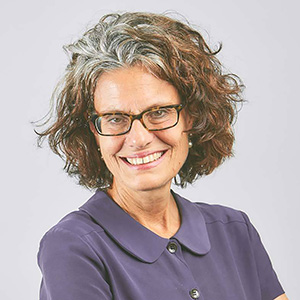Over the next few weeks, we’ll be introducing you to some of the world-changing storytellers that will be speaking at Story Movements, our new catalytic two-day convening September 15-16 that examines platforms and genres of civic media storytelling through the lens of social justice. From documentary film to investigative journalism to virtual reality to participatory storytelling to persuasive gaming to photography, the convening examines and captures the current and future-looking moment in story-led demands for social change.
 Today, meet Mary Crowley, the VP of Communications and Public Affairs at the Vera Institute of Justice.
Today, meet Mary Crowley, the VP of Communications and Public Affairs at the Vera Institute of Justice.
Project Synopsis: Incarceration’s Front Door: Telling the Story of Jails in America.
Jails exist in nearly every town and city in the United States. Although rarely on the radar of most Americans, jails are the front door to the criminal justice system in a country that holds more people in custody than any other on the planet. Their impact is far-reaching and profound: in the course of a typical year, there are nearly 12 million jail admissions—almost 20 times the number of annual admissions to state and federal prisons—at great cost to individuals, their families and communities, and society at large. The Vera Institute of Justice, with support from the John D. and Catherine T. MacArthur Foundation as part of the Safety and Justice Challenge, is working to create a national conversation about changing this picture – as well as working on the ground with change-makers in the system.
With reports and data visualization, we’re raising awareness by letting people know about what happens in their own backyards – in the 3000 jails in just about every county in America. In addition to sounding the data alarm, we’re telling the human toll of jail by letting people share their stories. Our Human Toll of Jail is a platform for true stories about and by ordinary people, both those who are or have been caught up in the criminal justice system, and those who work on its front lines. It aims to put a human face to the uses and abuses of jails in the United States, to expose the flesh-and-bone reality that illustrate the mind-numbing numbers. By pairing data and stories, we’re working to stop mass incarceration at its front door – jail.
CMSI: What was your path to becoming the VP of Communications and Public Affairs at the Vera Institute of Justice?
Mary Crowley: I started my communications career in health and medicine – I spent a lot of time working on justice in health care, working to make sure that the poor and vulnerable had access to the advances in science and medicine that those with insurance had. This included working on a major campaign with the Robert Wood Johnson Foundation called Cover the Uninsured, and launching a public affairs and communications department at The Hastings Center, a bioethics think tank. After the Affordable Care Act passed, I was interested in another challenge and was fortunate enough to come to Vera four years ago. I’ve had the opportunity to significantly build our communications capacity and delve into what I think is one of the most important social justice issues of our time, at a time when there is an opportunity for real change.
CMSI: What inspired you and the team at Vera to create the Human Toll of Jail project?
Mary Crowley: Reducing the use of jail is a core priority at Vera. We’re doing that by working directly in a number of jurisdictions, but also by trying to change the national conversation. We released several reports that put the issue of jail incarceration on the national table. But, my communications team, as well as our program colleagues, knew you need stories to change hearts and minds. And, there is a real opportunity for nonprofits to use “bespoke editorial” – our own stories and dissemination channels – to drive national conversation. We partnered with a great group called Narratively, who helped develop a platform and used their network of journalists and artists – paired with our expertise – to find 10 compelling stories that illustrate many aspects of jail incarceration. And, the stories received significant public attention.
CMSI: What role do the stories from the project play alongside the Vera Institute’s other projects and initiatives?
Mary Crowley: The success of Human Toll of Jails has inspired us to use storytelling in other areas of Vera’s work. For example, we have a new initiative called Reimagining Prison. As the chorus calling for criminal just reform grows ever louder, we must have a clear and coherent set of goals and outcomes in mind when we consider the purpose and goals of incarceration. One of our strategies in creating a bolder, braver vision for incarceration in the United States will be to share widely the stories of those working in the system and those impacted by it – and how they imagine change.
……………….
To learn more about The Human Toll of Jails project, click here.
To see the complete Story Movements line-up, click here.
To register for Story Movements, click here.
